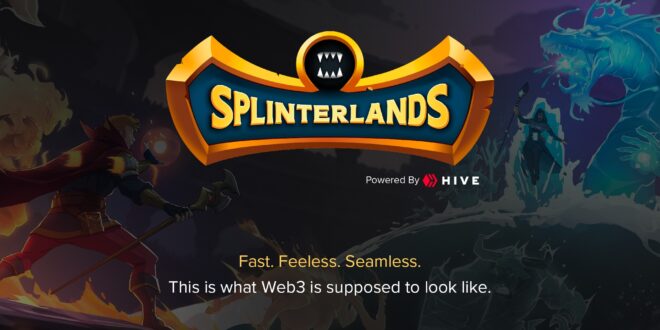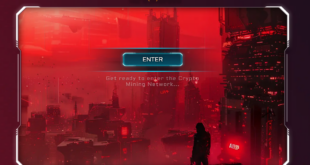In the dynamic world of blockchain technology, the integration of gaming and cryptocurrency has led to the creation of innovative and engaging platforms. Among these, Splinterlands has emerged as a standout success, combining the excitement of trading card games with the benefits of blockchain technology. This article aims to provide an in-depth look at Splinterlands, exploring its gameplay, economy, community, and the potential it holds for the future of gaming.
What is Splinterlands?
Splinterlands is a digital collectible card game built on blockchain technology. Launched in 2018, it allows players to collect, trade, and battle with unique digital cards. Each card represents a monster or a summoner with distinct abilities, and they can be used to build powerful decks for strategic battles. The game leverages the Hive blockchain to ensure transparency, security, and true ownership of digital assets.
Key Features of Splinterlands
- Blockchain-Based Ownership: Players have true ownership of their cards, which are represented as NFTs (Non-Fungible Tokens) on the Hive blockchain. This means cards can be bought, sold, and traded freely on the market.
- Play-to-Earn: Splinterlands incorporates a play-to-earn model, where players can earn rewards in the form of cryptocurrency and valuable cards through gameplay.
- Strategic Gameplay: The game requires players to build decks and strategize based on the strengths and weaknesses of their cards, adding a deep layer of strategy to the gameplay.
- Interoperability: Splinterlands cards and assets can be integrated and traded across multiple blockchain platforms, enhancing their utility and value.
The Hive Blockchain
Overview of Hive
Hive is a decentralized blockchain and cryptocurrency ecosystem designed for content creators, social media platforms, and decentralized applications (dApps). It was created as a fork of the Steem blockchain in March 2020. Hive aims to provide fast and scalable blockchain solutions with zero transaction fees, making it ideal for applications that require high transaction throughput, such as gaming and social media.
Features of Hive Blockchain
- Decentralization: Hive is governed by its community of users, with no central authority controlling the network.
- Scalability: Hive can handle a large number of transactions per second, ensuring smooth and efficient operation for dApps like Splinterlands.
- Fast Transactions: Transactions on the Hive blockchain are confirmed within three seconds, providing a seamless user experience.
- Zero Transaction Fees: Users do not incur transaction fees, which is particularly advantageous for gaming applications that involve numerous microtransactions.
Getting Started with Splinterlands
Starting your journey in Splinterlands is straightforward. Here’s a step-by-step guide to get you started:
1. Create an Account
Visit the Splinterlands website and sign up for an account. You can start playing for free with a limited set of cards, but to unlock the full potential of the game, you may want to purchase a Summoner’s Spellbook.
2. Purchase a Summoner’s Spellbook
The Summoner’s Spellbook is a one-time purchase that unlocks the full game, allows you to earn rewards, and provides you with starter cards. This is an essential step if you want to dive deeply into Splinterlands.
3. Building Your Deck
Once you have your account and Spellbook, you can start building your deck. The game offers various ways to acquire cards, including purchasing packs, participating in rewards, and trading on the market.
4. Understanding the Cards
Each card in Splinterlands belongs to a specific splinter (faction) and has unique stats and abilities. Understanding these attributes is crucial for building effective decks. The main card types are:
- Monsters: These cards fight in battles and have various abilities and stats.
- Summoners: These cards summon monsters and can boost their stats or provide special abilities.
5. Engaging in Battles
Battles in Splinterlands are automated, but the key to success lies in the preparation. You’ll select your summoner and monsters based on the battle rules and your strategy. Once you submit your team, the battle plays out, and the results are based on the strategic choices you made.
Economy and Marketplace
The Splinterlands economy is vibrant and robust, driven by its native token, Dark Energy Crystals (DEC), and the collectible cards themselves. Here’s a closer look at the economic aspects of the game:
Dark Energy Crystals (DEC)
DEC is the primary in-game currency, earned through battles, tournaments, and various in-game activities. DEC can be used to purchase cards, packs, and other in-game items. It can also be traded on various cryptocurrency exchanges.
Card Packs
Players can purchase card packs containing random cards of varying rarities. Opening packs can yield valuable cards, which can be used in battles or sold on the marketplace.
Marketplace
The Splinterlands marketplace allows players to buy, sell, and trade cards. Prices are determined by supply and demand, with rarer cards fetching higher prices. The marketplace is a crucial component of the game, providing liquidity and facilitating the play-to-earn model.
Tournaments and Rewards
Splinterlands hosts regular tournaments where players can compete for substantial rewards, including DEC, cards, and other valuable items. Additionally, players earn daily and seasonal rewards based on their performance in ranked battles.
Community and Ecosystem
The Splinterlands community is active and supportive, comprising players, developers, and enthusiasts who contribute to the game’s growth and development. The game’s decentralized nature means that the community has a significant say in its future direction.
Guilds
Players can join guilds, which are groups of players who band together for mutual benefit. Guilds provide various advantages, including increased rewards and access to special guild-only tournaments.
Social Media and Forums
Splinterlands has a strong presence on social media platforms like Twitter, Discord, and Telegram. These channels are great for staying updated on the latest news, participating in discussions, and seeking advice from experienced players.
Future Prospects
Splinterlands is continually evolving, with new features, cards, and gameplay mechanics being introduced regularly. The developers are committed to expanding the game’s ecosystem and enhancing its play-to-earn capabilities.
Potential Developments
- New Game Modes: Introducing new game modes and challenges to keep the gameplay fresh and engaging.
- Expanded Interoperability: Enhancing the interoperability of Splinterlands assets with other blockchain platforms and games.
- Mobile Optimization: Improving the mobile gaming experience to attract a broader audience.
Conclusion
Splinterlands represents a significant innovation in the world of digital gaming, combining the allure of trading card games with the advantages of blockchain technology. Its play-to-earn model, strategic depth, and vibrant community make it an exciting platform for both gamers and crypto enthusiasts.
Built on the Hive blockchain, Splinterlands benefits from fast transactions, zero fees, and a decentralized governance model, ensuring a secure and efficient gaming experience. Whether you’re a seasoned player or a newcomer to the world of blockchain gaming, Splinterlands offers a unique and rewarding experience.
As the game continues to evolve, it holds the potential to reshape the landscape of digital gaming, offering new opportunities for earning, strategy, and community engagement.
If you’re ready to embark on your Splinterlands adventure, head over to Splinterlands and start building your deck today. Happy battling!
 Crypto News We can see it all
Crypto News We can see it all

